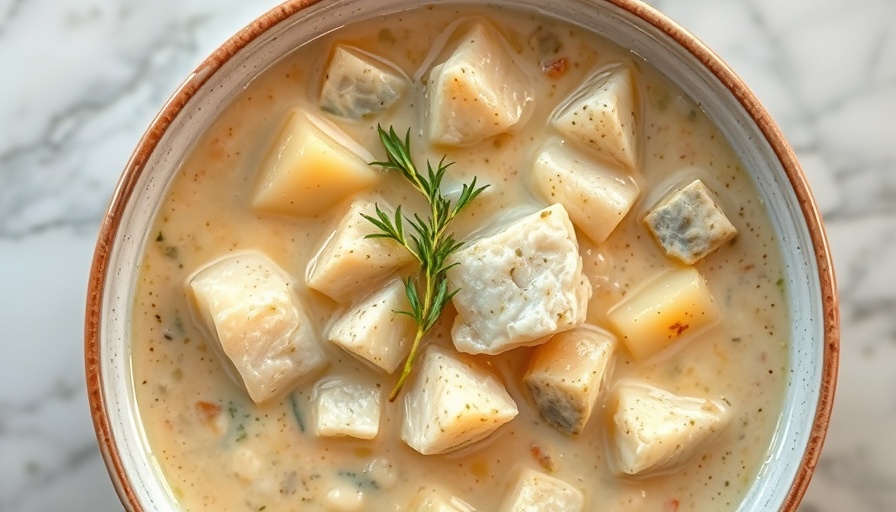
Discovering the Comfort of New England Fish Chowder
When you think about iconic dishes from New England, fish chowder undoubtedly comes to mind. This rich and creamy soup isn’t just a meal; it embodies warmth and comfort, making it a favorite during chilly months. Known colloquially as "chowdah," this dish is revered by locals and often lovingly debated over its best preparations and variations.
Historical Roots: A Dish Born from Tradition
The origins of chowder are fascinatingly linked to the French word "chaudière," meaning cauldron. Traditionally, chowder was cooked in large pots, symbolizing community and togetherness. New England fish chowder typically features simple ingredients: seafood, potatoes, and sometimes salted pork, all simmered in a luscious creamy broth. This recipe has evolved, but its core principles remain unchanged, connecting it to its comforting roots.
Comparing Coastal Staples: New England vs. Manhattan Chowder
Culinary enthusiasts often find themselves in the midst of a chowder debate: New England versus Manhattan. The defining factor is the broth; New England chowder boasts a creamy, milk-white consistency, while Manhattan chowder showcases a bright, tomato-based soup. This distinction not only reflects regional preferences but also reveals the diverse culinary heritage of American coastal communities. Each style has its own loyal fans and brings a unique taste and texture to the dinner table.
Health Considerations: Enjoying Chowder in Moderation
While fish chowder is delicious and nourishing, it’s important to be mindful of its richness. The heavy cream and bacon can elevate the calorie count and fat content, making it a dish best enjoyed occasionally. For those looking for lighter alternatives, consider using low-fat milk or omitting bacon. These adjustments can help make this comforting dish a little more health-friendly without sacrificing its satisfying taste.
Perfect Serving Suggestions for a Cozy Meal
When serving fish chowder, presentation can elevate the experience. A bowl topped with seasoned oyster crackers provides a delightful crunch, enhancing the creamy texture of the chowder. You might also consider serving it alongside homemade bread or a fresh salad to balance the meal. The combination invites not just a taste but a sensory experience, turning a simple dinner into a heartwarming occasion.
Creating Mindful Moments with Chowder
Cooking and enjoying fish chowder can serve as a mindfulness practice. Engage with the cooking process fully—savor the chopping of vegetables, relish the aromas wafting through your kitchen, and take pleasure in each warm spoonful. This practice of being present can lead to a deeper appreciation of your meals and foster emotional well-being.
This winter season, why not gather loved ones for a cozy evening of fish chowder? Embrace the comforting nature of this classic meal and allow it to stir conversations and create memories—as each bowl offers not just nourishment but also the warmth of connection.
 Add Row
Add Row  Add
Add 




Write A Comment